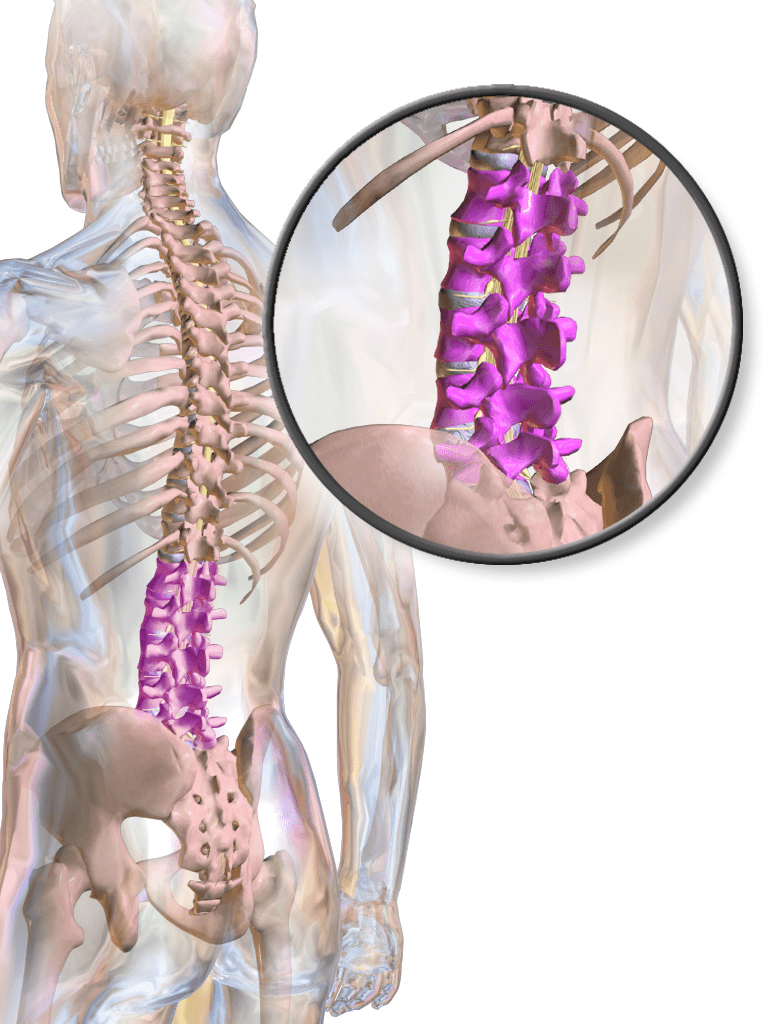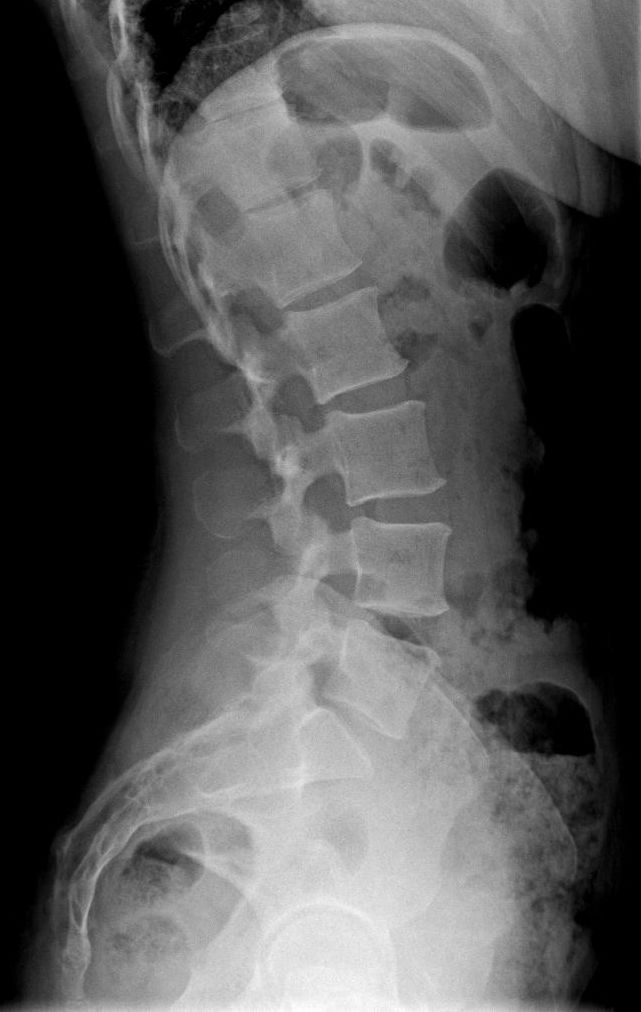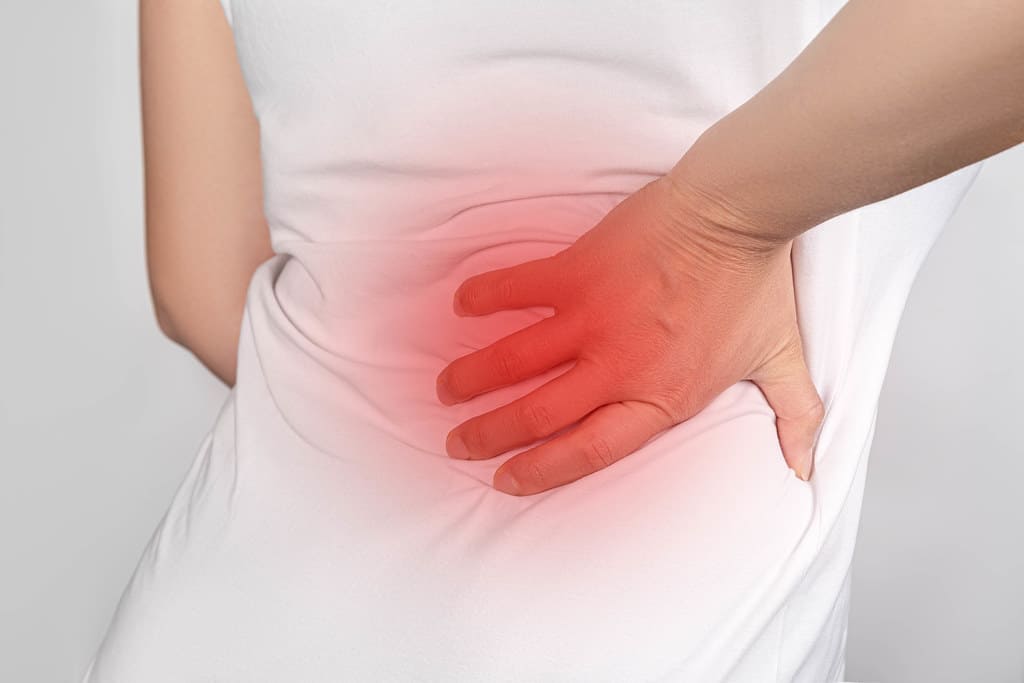A person living a sedentary lifestyle may develop lumbar hyperlordosis.
The human spine is made of 33 bones stacked one on top of the other, forming an S-shape when viewed from the side. It’s the part of your body that gives you support, flexibility, and proper mobility.
Although naturally curved, excessive curvature can result in a risk of complications. One of these conditions is called hyperlordosis, a reversible case that can occur in all ages.
If you do a lot of sitting and lying down, with very little to no exercise and let alone a bad posture, you may have it. Read on and learn the causes and common symptoms and how it’s treated.
The Spine
 (Image Credit: Wikimedia Commons)
(Image Credit: Wikimedia Commons)
A spine with healthy curves makes an S-shape. It consists of three curved segments:
- Cervical spine (neck)
- Thoracic spine (chest)
- Lumbar spine (lower back)
These natural curvatures absorb shocks to your body, preventing spinal injury. Moreover, these spine curvatures are dependent upon one another.
To your lumbar spine, there should be a slight curve but not too much. Otherwise, say there’s an excessive reverse C-shaped curvature, the spine may be at health risk.
This issue can be identified as lumbar hyperlordosis. A condition that can affect other lower body regions, e.g. the stomach and buttocks, but there’s more to it than that.
Understanding Hyperlordosis
 (Image Credit: Wikimedia Commons)
(Image Credit: Wikimedia Commons)
Hyperlordosis, a.k.a. “swayback” or “hollow back”, involves an exaggerated curvature of the lower spine. This part of your backbone is known as the lumbar region.
It is usually identified with a C-shape appearance from a sideways profile. Caused by the lumbar spine pushing the stomach forward and the buttocks backwards.
This extreme inward curvature can limit movement or contribute to back pain. The condition is often mild and reversible and can affect anyone, but is rarely seen in children.
Now, this discussion leads to the causes and symptoms.
Causes
Lumbar hyperlordosis often occurs due to poor posture and a sedentary lifestyle. Other factors that may contribute are muscle imbalances or weakness, including:
- Sitting or standing for extended periods of time
- Obesity
- Lack of exercise and slouching
- Rickets or lack of vitamin D, calcium, or phosphate
- Habits that throw off spinal alignment, like wearing high heels
- As a result of another underlying spinal condition
The shape of the spine can also be affected by neuromuscular disease and pregnancy.
The entire spine has a complex structure with several important parts and functions. It’s so prominent that it can affect more than one area when a spinal condition develops. Spinal conditions linked to hyperlordosis include kyphosis, discitis, and spondylolisthesis.
Symptoms
If you have a lumbar spine injury, the apparent symptom you may see is the appearance of your stomach. In most cases, it thrusts forward, causing the bottom to push out. A protruding abdomen and buttocks pushed outwards, in short.
Common symptoms can include:
- Lower back pain. Mild to severe nuisance, which may worsen with movement. You may also experience back spasms or tightness.
- Numbness. Besides the pain, you may also experience a tingling sensation.
- Difficulty moving. Due to the muscle tightening and stiffness in the lower back, you may have movement issues.
- Loss of bladder control. This is a rare case, but you may suffer from this.
In cases where the spinal curvatures are severe, there’s also a higher chance of postural changes. But a spinal condition can cause varying symptoms that affect people differently. Variables such as age and spinal flexibility, as well as the degree of condition severity.
Look at your profile in a full-length mirror, and you may see the C-shape curvature from the side. If you do, get your condition checked with an Orthopaedic doctor and/or surgeon.
Diagnosis
Most cases of hyperlordosis don’t require special medical care. Regular exercises and stretches may help you achieve a correct posture. But if you’re experiencing pain or your lower back feels rigid, a trusted GP can determine the cause.
Your doctor will ask for your symptoms and what movements trigger discomfort. An X-ray and other image tests like MRI and CT scan may also be performed. This is to measure your spinal curvatures and determine the abnormality.
Through this, they may rule out other possible health conditions, such as:
- Bone loss in the spine
- Nerve compression or “pinched nerves”
- Damage to a spinal disc
Moving on to the treatments available.
Treatment Plans
Treatment involves techniques that help prevent the worsening of the abnormal curvature. But overall, the approach will be influenced by the condition’s underlying cause.
For mild symptoms, where the case doesn’t affect the flexibility of the spine, exercise therapy may do. Focus on routines that target your muscle groups and enhance posture. Stretching the muscles also works; do it before and after the exercise therapy.
Here are some simple posture at-home exercises that require no equipment:
- Child’s pose
- Forward fold
- Cat cow
- Standing cat cow
- Chest opener
- High plank
- Side plank
- Downward-facing dog
- Pigeon pose
- Thoracic spine rotation
Where obesity may be a contributing factor, your doctor will devise a weight-loss plan. This may also include physical therapy exercises to boost muscles and improve posture.
You may as well be advised to temporarily wear a back brace & support to keep to correct the spine alignment. Non-surgical options may also involve the following:
- Over-the-counter or NSAID prescription. Your doctor will help you determine if NSAIDs are right for you. Such medications may be used as a temporary measure.
- A gentle form of exercise like Yoga
- Spinal strength training
If the hyperlordosis is due to muscle imbalances, a referral to a physical therapist may be vital. But if other treatment attempts fail to provide relief, surgery may be the last resort. When combined with physical or exercise therapy, surgical treatment is often effective.
Prevention
The spine is all about movements. Thus, staying active and maintaining good posture are the best preventive measures. Doing so can keep yours and its surrounding muscles as flexible and loose as possible.
If you sit a lot during the day, take small breaks to walk around and stretch. And if you have to stand for a long time, shift your weight from one foot to the other. Wearing comfortable, low-heeled shoes and maintaining a moderate weight also works wonders.
But if none of these eases the symptoms, it’s always best to seek medical advice. Don’t wait for the back pain to worsen and cause extra underlying problems. A doctor will carry out a spine examination and create a tailored treatment plan for you.


 (
(